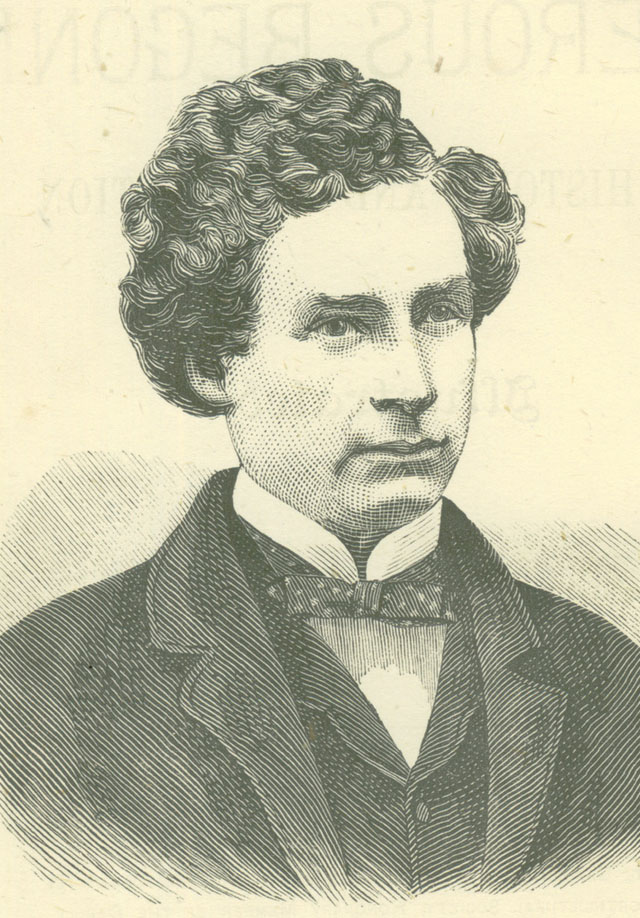Researched by Heritage Advisory Group
Richard Pearce was born at Stoke Damerel, now part of Devonport, in about 1836. At the age of about 22 or 23, Pearce went to join the firm of James Veitch & Son at Mount Radford in Exeter. By this time, the nurseries of James Veitch were already nationally important. In February 1859, Pearce signed a contract with James Veitch & Son to travel to South America for three years ‘… as a collector of plants, seeds, land shells and other objects of Natural History.’
Many of these objects would be collected for museums and private collectors, some of which may make up part of the Veitch Collection at RAMM in full, although the provenance of some of these objects is inconclusive.
Pearce had a particularly keen eye for discovering good novelties and soon the new glasshouses at Veitch’s nursery in Exeter were filling up with his discoveries. He undertook two trips for the Veitch business. His first trip was between 1859 and 1862 when travelled in Chile and Ecuador. His second was between 1863 and 1867 when he travelled in Bolivia, Chile and Northern Argentina.
In Peru, he also visited Lima, Cuzco, & the high Andes and Arequipa in the south of the country.
In 1859 Pearce became the first to discover and introduce the white version of the Chilean national flower, Lapageria rosea var. alba, still very sought after today. He was an excellent and very successful collector and introduced many other hardy and greenhouse plants during this period. They included a number of ferns which were greeted with great excitement as the Victorian fern craze was at its height at this time.
During 1860 Pearce made numerous journeys into the mountains of Chile. As he travelled through the Chilean Cordilleras, he wrote the following vivid description of the scenery: ‘It is of the most charming description; gently undulating meadows covered with a carpet of short grass, placid lakes reflecting from their smooth surface the mountains around, foaming cataracts and gentle rivulets, deep gorges and frightful precipices, over which tumble numerous dark, picturesque waterfalls reaching the bottoms in a cloud of spray. High rocky pinnacles and lofty peaks, surround one on every side.’
He wrote further: ‘Nor is the vegetation any less beautiful and interesting. At an elevation of 4,000 ft, the vegetation exhibits a totally different character from that of the coast. Here one finds Antarctic Beeches (Fagus antartica and F. betuloides), which constitute with Fitzroya patagonica the large forest trees, the Embothrium coccineum,
Desfontainea spinosa and Philesia buxifolia, three species of Berberis, Pernettya and Gaultheria are the most abundant of the flowering shrubs, whilst the numerous pretty little rock-plants meet one at every step with their various forms and colours.’
From the coastal town of Concepción in Chile he discovered the pretty evergreen climber, Berberidopsis corallina and sent seed back to Veitch. This plant is now endangered in the wild and DNA analysis of material from UK gardens shows that all plants are descendants of Pearce’s original introduction of 1860. If he had taken cuttings, all the UK specimens would be clones. However, genetic variation within the population shows that he must have collected seed providing hope for future re-introductions to Chile.
Early in 1862, Pearce left Chile and travelled north to Peru and Bolivia, before moving on to Ecuador to collect more stove and greenhouse plants and sent six large Wardian Cases of plants including Calathea veitchiana, named in honour of his employers. From Bolivia he introduced Begonia boliviensis, the first known tuberous begonia and one of the parents of those we grow in tubs and baskets today.
Other begonias followed including Begonia pearcei, named in his honour. The introduction of these begonias, were instrumental in the establishment of the begonias we use today. However, it is worth remembering that these new plants were for the benefit of Veitch’s wealthy clients only as each of them would have cost the average working man at least a month’s wages; 21 to 63 shillings each in 1868. Near Cuzco in Peru, Pearce found one of the few South American orchids, Masdevallia veitchiana, which turned out to be one of his last introductions.
It later became the favoured orchid of Harry, later to become Sir Harry Veitch, who was himself an orchid expert. Official portraits of Sir Harry Veitch show him with flowers of Masdevallia veitchiana.
Soon after his return to England in 1866, his engagement with James Veitch & Son was terminated and he returned to his native Plymouth where he married. However, in 1867 he returned to London and entered the employment of one of Veitch’s competitors, the nursery of the late William Bull. Richard Pearce was employed to collect in South America once again. He sailed to Panama in 1868 but on his arrival he was taken ill. Richard died a few days later on 17th July 1868, of yellow fever.
Harry Veitch wrote that “Richard Pearce had a lion’s heart and his early death was a great loss to horticulture.”
